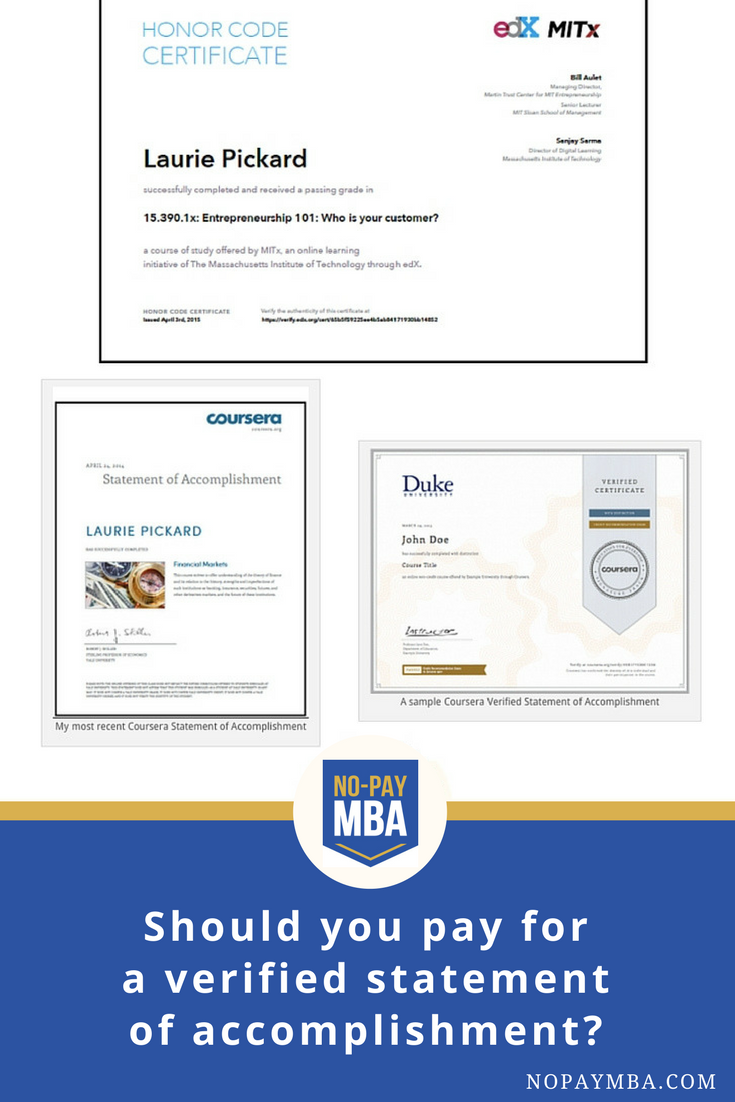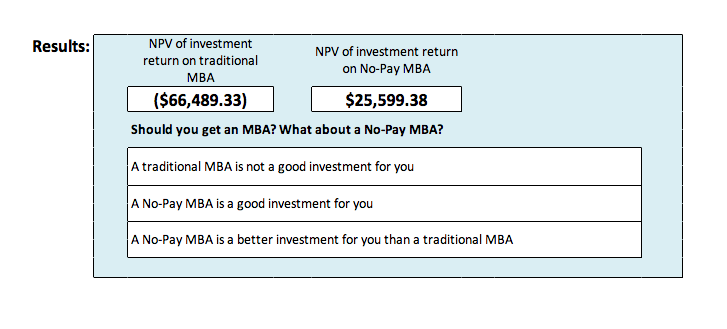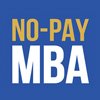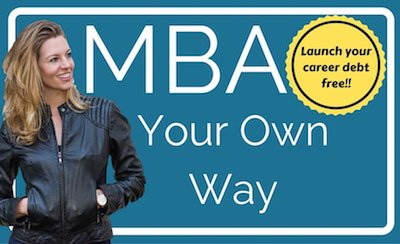by Laurie Pickard | Aug 2, 2014 | Courses, Platforms, and Profs, MOOC MBA Design

I just finished another outstanding course, “Foundations of Business Strategy,” taught by Michael J. Lenox of the Darden School of Business at the University of Virginia. Like Wharton, Darden is a leader in providing B-school content via MOOC. This course was dense with content. In just six weeks we covered:
- The concept of strategic analysis and the impact of competitive markets on business success
- How to analyze industry forces
- How to analyze firm capabilities
- How to analyze competitive dynamics
- How an organization can best position itself competitively to create value
- How to analyze firm scope
As you can tell from the number of times the words “how to” appear in the above list, this course was very focused on building practical skills. In addition to two or so hours of video lectures each week and readings from a book called The Strategist’s Toolkit, each week also included a case study from a particular industry – also with reading and analysis required. Additionally, a key requirement of the course was to conduct a strategic analysis of a real business and draft a report with hard data and specific strategic recommendations.
Six weeks. Normally, I like MOOCs that hold me to a schedule; the schedule keeps me focused and prevents the course from dragging on. However, while the content in this course was fantastic, my one complaint was that I didn’t really have time to engage with all of it. I normally spend about 4 hours per week on a course. This one could have easily used 10. In fact, I may take this course again next time it’s offered. That’s the beauty of MOOCs.
What I chose to focus on this time around was the final project. I registered for this course in part because I had recently heard about Coursolve, an online experiential learning platform that connects MOOC students with real companies. The companies post needs that correspond to the skills covered in the MOOCs, and students can try out their new skills solving real-world problems. Rather than basing my final project on a well-known company with which I had no personal connection, I was able to browse the needs posted on Coursolve and choose a real-world situation to work on.
If you’re taking business MOOCs and you haven’t heard of Coursolve before, I strongly encourage you to check out what they’re offering. The needs relevant to my business strategy course ranged from an HR company trying to figure out the needs of its customers, to a mining company looking to go public, to an Indian clean tech company trying to come up with a marketing plan. For my final project, I chose to work with Coursolve itself, as this online startup is still crafting its own business model.

Between the case studies and the final project, which will be assessed by my classmates, “Foundations of Business Strategy” offered above-average opportunities for interaction, skill-building, and experiential learning. Some people question the ability of online courses to teach a subject like strategy. This course proved to me that it can indeed be done, and quite well.
by Laurie Pickard | Jul 12, 2014 | MOOC MBA Design

Chillin’ in a cafe in Paris. Not too shabby.
I’m back from summer vacation!
It was a wonderful and much-needed break, thanks for asking. I feel refreshed and ready to dive into year two of my MBA course work. During my travels, I also had some time to think about where I’m going with this project. I’m looking forward to sharing some of these insights over the coming semester.
Here is a taste of what’s coming next:
Themes of the semester
Two courses recently caught my attention, and I didn’t want to miss either one of them. So rather than choosing the theme and finding courses to match it, this time I chose the theme based on the courses I wanted to take. The courses are Foundations of Business Strategy and Social Psychology. The theme I’ve devised to fit these two courses I’m calling Inside an Organization. For the next ten weeks or so I’ll be focusing on decision-making and interpersonal relationships within businesses.
The next theme I’m gearing up to tackle is Data Analysis. Math-heavy courses require the biggest time commitment, so I’m waiting to start this unit until my schedule is a bit clearer. When learning new math skills, you can forget about multi-tasking; you can’t watch a course video while folding laundry or getting ready for work. Since many data analysis courses are available through paid providers like Lynda, Udemi, and Udacity, I’m also planning to use that unit to try to answer the question of whether you should pay for online courses.
What about the MBA network?
It has been pointed out to me on more than one occasion that part of what you pay for in an MBA degree program is the exceedingly valuable MBA network. I realize that this is a big gap in my self-administered course of study, and I’ve been working hard to close it. In future posts I will share some of the solutions I find most promising. I’ll also reflect on my experience forming virtual study groups, using MOOC discussion forums for networking, and pursuing virtual internship opportunities.
Continuing Innovation
Through my online studies, I’ve become very interested in how post-secondary education is changing. I’ll continue my series of thought pieces on the business opportunities related to MOOCs. I’m also planning to cover some of the best startups offering services for MOOC students and other online learners. Some of these are already listed on my Resources page. I’ve come across others and am finding new and better ways to use the services I’ve already identified. Finally, I’d like to spend a post or two on the opportunities for online learning in the developing world. While some people have dismissed MOOCs due to their early failure to attract large numbers of students from underserved populations, I think it’s far too early to discount the incredible potential for this method of learning for students without access to traditional university education.
As you can see, this is going to be a busy semester! I’m looking forward to continuing the conversation, so keep your comments and messages coming. And to those of you who are studying alongside me, keep up the good work!
by Laurie Pickard | May 24, 2014 | MOOC MBA Design, Thoughts on Higher Ed and Life

Recently, I’ve experienced a significant increase in the demands on my time. First, I’ve been busier at work. Second, I’ve taken on the job of managing the finances for the commissary at the US embassy in Kigali. Third, I’ve been revamping my site and have simultaneously been getting more requests for guest posts on other sites. And of course I haven’t stopped taking MBA courses. In fact, I am currently taking three MOOCs instead of my usual one to two. This jam-packed schedule has required some creative thinking on how to fit in course work on top of everything else, but I have been unwilling to drop any of my courses.
Here’s why I’m committed to sticking with all three courses and how I’m managing to fit everything in.
An Introduction to Marketing
Level of difficulty: Easy
Time per week: 2 hours
Strategy: Watch course videos and take quizzes in the evening after work
This course is part of Wharton’s foundation series; the others are Operations Management and Accounting, which I’ve already taken, and Corporate Finance, which I plan to take next time it’s offered. I’ve been impressed with the Wharton courses overall, and I’m committed to completing all four. Marketing is easier than the two other Wharton courses I’ve taken, but just as engaging. It is easy to fit it into my schedule, since the videos are entertaining enough to hold my attention even when I’m tired after work. In fact, my biggest complaint about this course so far is that the quizzes aren’t difficult enough – which, given my current scheduling constraints is probably not something I should be griping about.
Credit Risk Management
Level of difficulty: Difficult
Time per week: 4 hours
Strategy: One lesson or one problem set every day before work
Credit Risk Management is the course I should have dropped, but it’s my most difficult course, and I couldn’t bring myself to drop my hardest course twice in a row. Credit Risk Management covers how banks determine how much cash to keep in reserve, based on their borrowers’ risk of default. It’s given me some insight on how banking works, though it isn’t immediately obvious how I will apply any of this outside the classroom. Probably the most useful part of the course is that I’m learning R, a statistical analysis program, which I expect will come in handy next term, when I focus on data analysis.
This is one of those courses in which all assignments are due on the same day – the last day of the class. Which is great because it provides flexibility, but also terrible because it is too easy to fall behind. And the assignments are quite challenging to boot. To keep myself on track, I have started doing one short lesson or one problem set every morning before going to work.
Beyond Silicon Valley: Growing Entrepreneurship in Transitioning Economies
Level of difficulty: Moderate
Time per week: 2.5 hours
Strategy: Study at work – don’t worry, my boss knows!
Beyond Silicon Valley is the course that is most directly relevant to my work. I am an entrepreneurship specialist in a place that is quite far from Silicon Valley – both physically and in terms of the entrepreneurship landscape. This course discusses how governments, donors, anchor institutions, business incubators, and other players can create an ecosystem to support entrepreneurs. To make this course even more exciting, I’ve been in direct contact with the professor – no small feat in a course with thousands of enrollees from around the world. I’ve also been using this class as a laboratory for finding ways to engage more meaningfully through discussion forums. More on that in a future post.
Because the material in Beyond Silicon Valley is so obviously connected to my work – Rwanda is even used as an example! – I managed to get it included in my annual training plan. Which means that I can watch videos, post on forums, take quizzes, and write the required reflection journal entries during working hours. Score!
I’m hoping that some of these strategies might be helpful for others trying to squeeze online courses into a busy schedule. Feel free to post other methods you’ve come up with in the comments section of this post.
After these courses are done, I’m going on summer break!
by Laurie Pickard | May 10, 2014 | Career Development, Courses, Platforms, and Profs, MOOC MBA Design
This post has been updated for 2015! See the new post here:
https://www.nopaymba.com/pay-verified-statement-accomplishment-mooc-update/

I’m currently taking three courses – two from Coursera and one from edX. All three come with a final course certificate, and all three offer an upgrade option for that certificate. In my two Coursera courses, the “Signature Track” option comes with a “Verified Statement of Accomplishment;” in my edX course, I can choose to enroll as an “ID-verified” student to get a “Verified Certificate of Achievement.”
So far, I haven’t spent any money on course certificates. Frankly, I wasn’t convinced the first time Coursera asked me to join a course’s Signature Track, and I still don’t see the added value.
What exactly is a verified course certificate?
Both Coursera and edX offer essentially the same product. For a fee ($49 on Coursera, $25 on edX), you can verify your identity by submitting a typing sample and snapping your image on a webcam. On subsequent logins, the system makes sure that you are the same student as before. At the end of the course you get a slightly snazzier-looking certificate than you otherwise would, with the word “verified” on it.
The value proposition for this product is based on four assumptions:
1. Course certificates have value to students.
2. Students will cheat to get these certificates, so there is value in ensuring that the person who holds the certificate is the same person who completed the course work.
3. Webcam photos and typing samples are an effective way of verifying a person’s identity.
4. Employers (or other third parties) know the difference between verified and non-verified course certificates.
Why I haven’t bought any course certificates
First, I’m skeptical that course certificates themselves are valuable. I can hardly imagine that I’ll present my course certificates to future employers for the same reason that I don’t list my individual courses from undergrad on my resume. The totality of the program of study is much more important than any individual class. That said, some type of proof of course completion is probably worth something, especially if you can aggregate individual certificates into something bigger.
If certification is valuable, then it does follow that some students will cheat to get them. However, I’m not at all convinced that verifying that the same student logs in again and again is a good way to prevent cheating. For example, a student who wants to cheat could get answers from a person sitting next to him or her, while still meeting the typing and webcam tests. It would even be possible for one person to do all the work for a course under someone else’s name.
But let’s leave that to one side. Let’s assume that the verification process is a good way of providing proof that person X really did the work for a given course. Even then, and even if employers care about course certificates at all, I highly doubt that they know the difference between verified and non-verified certificates.
Let’s say that employers do care. What the verified option currently tells you is that the person in question was able to complete a course without cheating. That might mean a lot if you knew that the course was really tough, or if mastering the material was essential for some particular purpose. But for any old course, if I was able to sit through a few videos, answer a couple of quiz questions, and post ungraded comments on a discussion forum, do you as an employer really care that I was able to do that without having to cheat? I’m not buying it.
A course certificate I would pay for
If MOOC providers want to make money from course certificates they could do a few things.
1. Don’t give away any course certificates for free. The marginal difference between having a certificate and having no certificate is greater than the marginal difference between a regular certificate and an identity-verified certificate. There are probably more people willing to pay for any kind of certificate at all when certificates aren’t free than there are people who will pay for a premium certificate when regular certificates are free.
2. Include course difficulty or relevance ratings on the course certificate. Anyone who has taken a few MOOCs knows that the level of difficulty varies enormously from course to course. Likewise, coursework varies from immensely practical to merely interesting. Students know the difference. It would be easy enough to crowd source difficulty and relevance ratings to give a better indication of how valuable a given course certificate is.
3. Focus on strings of courses that demonstrate professional competency. Completion of a series of courses has a much greater potential to signal mastery than a single course completion certificate. edX has started to group courses in its xSeries. Coursera has begun to do the same with its Specializations. The models here are slightly different. edX charges for the courses themselves at about $100 per course, while Coursera charges only for the verified Statements of Accomplishment. I am excited to take a set of business courses from one of these providers, but so far none have been released. (I’m still waiting on MIT’s Supply Chain Management series through edX.)
4. Market aggressively to teach employers the value of course certificates. A certificate I would be happy to pay for would be one that employers find interesting or impressive. Even more valuable would be a certificate that signals to an employer, “If this person was able to finish this series of courses, then she must be capable of doing work in ______________________________ (insert field).”
I’d like to hear what others think about this. Do you pay for course certificates? If so, why? If not, why not?

by Laurie Pickard | Apr 20, 2014 | MOOC MBA Design

These days you can find MOOCs on everything from Quantum Physics to Music Production and many other topics in between. But MOOCs don’t cover everything – at least not yet. Beyond the intro courses and the one-offs (Intro to Knitting Socks?), the options grow a bit more thin. Though I haven’t yet exhausted the available business courses – far from it – I anticipate a challenge when it comes to covering the more advanced topics that are part of a traditional MBA, as well as getting into greater depth on certain niche topics of particular interest for me.
One approach I have considered is to forget about the advanced stuff and just focus on the fundamentals. Honestly, how much do you remember from a degree program a few years out of school? If you have the basics and the overall approach down, most of the specifics of any given job you learn by actually doing that job. But while I do still plan to drill the fundamentals – perhaps more so than one would in a regular MBA – I have come up with some strategies that I think will allow me to go beyond first year coursework, even if I don’t find MOOCs to cover everything I want to learn.
- Web-based professional training
The web is full of training courses and materials geared toward a professional audience. Many come with a fee, but free resources are available as well. This strategy is especially helpful if you are looking to learn more about a specific niche field or technique. For example, I have recently become very interested in agricultural derivatives markets. Try as I might, I couldn’t find any MOOCs that covered the topic in depth (though Robert Shiller’s Financial Markets had a short unit on these markets). I did, however, come across a course from the World Bank designed for coffee traders, a self-study guide on hedging using futures and options from the CME Group (which runs the world’s largest derivatives exchange), and a series of video lectures from another trading platform – all meant for people who want to learn how to use derivatives for hedging commodity price risk. Score!
I’ve also found value in a series of webinars and other resources from the website AgriFin.org, which is meant to help practitioners working in access to finance, specifically in agriculture, to share knowledge.
These examples are specific to my interests in rural and agricultural development, but I expect similar resources exist for other fields.
- Re-creating the case study
One of the things I feel I’m missing as compared to a brick and mortar MBA is the case study approach. In many programs, students are asked to work on real world, out-of-the-classroom examples, sometimes working with real businesses that actually need their help. My plan is to find two to three real-world business projects in which to use my new skills over the course of my studies.
As a first step, I have signed up as the treasurer of the board for the American Employees Association at the US Embassy in Kigali, a job no one else was very keen to take on. To most people, keeping the books and generating financial statements for the organization that manages the embassy commissary probably just sounded like an additional headache, but to me, it sounded like a fantastic way to use exactly the skills I learned in Intro to Accounting.
- Community college and extension courses
Both community colleges and state universities, and sometimes even private universities, offer courses to the general public at minimal cost. If I were still in the US, I could have taken the University of Missouri’s course on trading agricultural derivitives, rather than using online resources. Many colleges, as well as chambers of commerce, offer community classes on topics like accounting, running a small business, budgeting, personal finance, and other similar subjects. One thing I like about such courses is that they are highly practical and skill-based.
- Read a book
If all else fails, I can always find books on the advanced topics that interest me. My hope is to find more interactive ways of learning throughout this course of study, but hey – whatever it takes.
by Laurie Pickard | Feb 23, 2014 | MOOC MBA Design
I’ve written a lot about why I think I a MOOC-based MBA is a good idea for me. I already have a master’s degree, I live in a place where B-school isn’t readily accessible, I already work in the field I want to be in, I am building my network through professional contacts in my field, etc. But I realize that I haven’t made the financial case for the No-Pay MBA. I would like to take this opportunity to fix that.
One of my themes this semester is finance, so it’s a good time to take a look at the financials for the No-Pay MBA. I have created a spreadsheet – what else do you do in finance? – to help me (and others) figure out how an investment in a No-Pay MBA stacks up next to an investment in a traditional MBA. I am making this spreadsheet available as a tool that anyone can use.
The spreadsheet can be found here: No-Pay MBA v. Traditional MBA Calculator
It looks like this:

For those who haven’t studied finance, let me explain how it works. In order to answer a question like “is an MBA a good investment?” you have to define the situation in which you will be investing in an MBA - are you a recent college grad with 30 years of work ahead of you, looking to go into a career in finance; or are you in your mid-thirties, working in non-profit administration, trying to get a leg up for your next position? These factors make a difference as to whether an MBA is a good choice for you or not. In the spreadsheet, the yellow boxes allow you to fill in details that reflect the particulars of your life and career situation. The spreadsheet has columns for three scenarios – traditional MBA, No-Pay MBA, and no MBA. I’ve blacked out the boxes that shouldn’t change from one to another. (Note: the spreadsheet won’t allow you to make changes within Google Drive. You’ll have to download it if you want to play around with it – which I encourage you to do!)
You can start with the simple stuff – your age, how much you’re making. For some of the items you’ll have to use a best guess or do some research – how much will the MBA cost per year, how much will you spend per year on living expenses, how much will you require in loans, etc. Any numbers that you’re really unsure about can stay as they are in the template. The numbers that appear there are my best guesses about things like the percentage one might pay on student loans – 6.8% - and the time it might take to pay them off – 15 years. Keep them as they are, or change them if you find better information.
How do you know what you’ll be making when you finish B-school? You don’t. But you can make an educated guess based on the starting salaries in the field you’d like to go into. The more accurate your guesses, the more accurate your final result will be. The same goes for the amount you’d make after a No-Pay MBA. Admittedly, there isn’t yet any information about how the market will value a MOOC MBA, so it’s probably prudent to make a conservative guess about how much you can increase your salary after such a course of study.
Also, bear in mind the assumptions I’ve made when making this spreadsheet. I’ve assumed that if you are doing a traditional MBA, it will take you two years, and you won’t be working during that time. For a No-Pay MBA, I’ve assumed three years (during which you will continue working) and $500 per year of incidental expenses associated with your coursework.
The one item you might not recognize is the discount rate. Basically, the discount rate is a way of accounting for the amount by which money loses value from year to year. Many of our grandparents have regaled us with stories about how much more valuable money was when they were kids. “I could buy ten candies for a penny! A dollar was really worth something back then.” Your grandfather is right. In 1940, his dollar could have bought 1000 candies. If he’d held on to that same dollar until today, he could probably only get about 25 or 50 candies with it. The dollar would have declined in value. That phenomenon is explained by the discount rate, and it is a very important consideration when evaluating any investment. For the purposes of the spreadsheet, I’ve set the discount rate at 3%, but you can change that as you wish.
Once you’ve input all your information, scroll down to the bottom of the page. (The boxes that aren’t highlighted are there to do automatic calculations based on the data you entered, so don’t change them - unless, of course, you want to build a better calculator, in which case, be my guest!) At the bottom of the page you will see a box that looks like this:

What this is showing is the net present value of your investment return for both the traditional MBA and the No-Pay MBA. The scenario in which you get no MBA at all is serving as a baseline. In order to be worth investing in, the MBA would have to result in you earning enough over the course of your lifetime to offset the cost of the MBA, the interest on your loans, and the lost earnings during the time you spend studying and not working. If you see a positive number in the box for “NPV of investment return,” the investment is a good one. The greater the number in that box, the better the investment. Why NPV, you ask? That stands for net present value, and it factors in the discount rate, as explained above.
As you can see, for the person I’ve invented here (perhaps not so different from me), the traditional MBA is not a good investment. The No-Pay MBA on the other hand, is.













